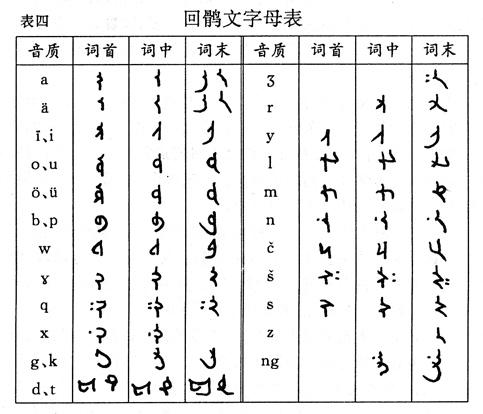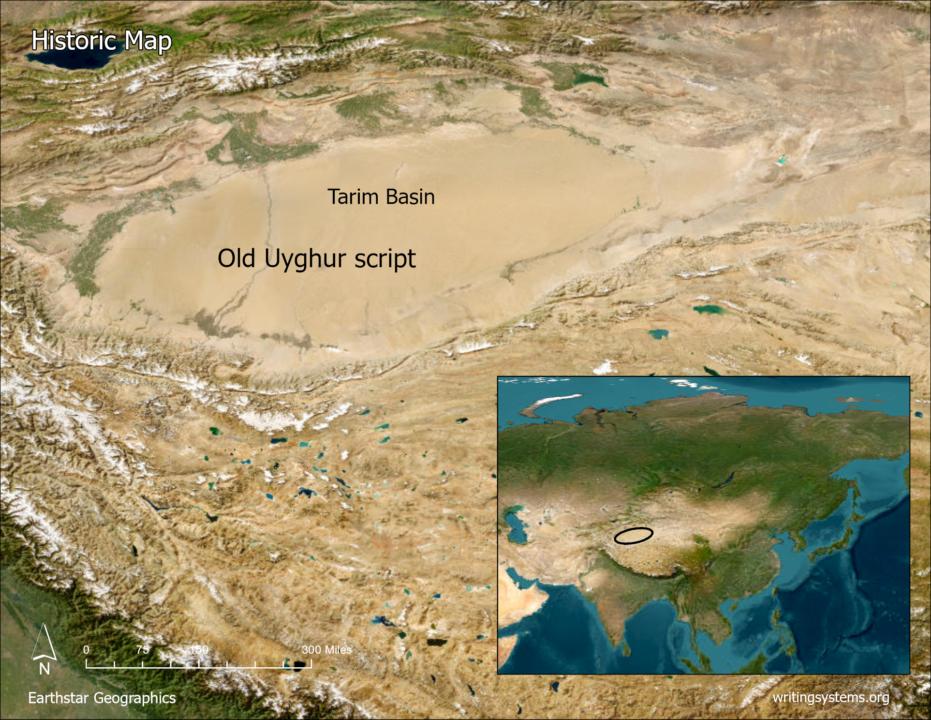“The ‘Uyghur’ or ‘Old Uyghur’ script flourished between the 8th and 17th centuries, primarily in the Tarim Basin of Central Asia and throughout various parts of Asia; as far as Anatolia to the west, Mongolia to the east, and Iran and Afghanistan to the south. Originally used for writing medieval Turkic languages, such as Karakhanid (ISO 639-3: xqa) and Chagatai (ISO 639-3: chg), it became a pan-Asian script as its use was expanded for recording languages such as Chinese, Mongolian, Tibetan, and Arabic.
It developed from the ‘cursive’ style of the Sogdian script during the 8th–9th centuries into an independent writing system with vibrant scribal and print traditions. Styles of the script are classified broadly as ‘square’ (‘formal’, ‘book’) or ‘cursive’. Gradations such as ‘semi-square’ and ‘semi-cursive’ naturally arose to enlarge the spectrum of styles. Moreover, as usage of the script continued, other styles developed, such as the ‘formal’ post-Mongolic hand used after the 15th century in Islamic manuscripts. Block printing was developed in the 14th century for producing books of Buddhist texts. Common usage of the script diminished by the 16th century, and was replaced by new orthographies for Turkic languages based upon the Arabic script.
However, its usage in Gansu is attested through the 17th century.“ - Anshuman Pandey, Final proposal to encode Old Gyghur in Unicode, 2020 p. 2



